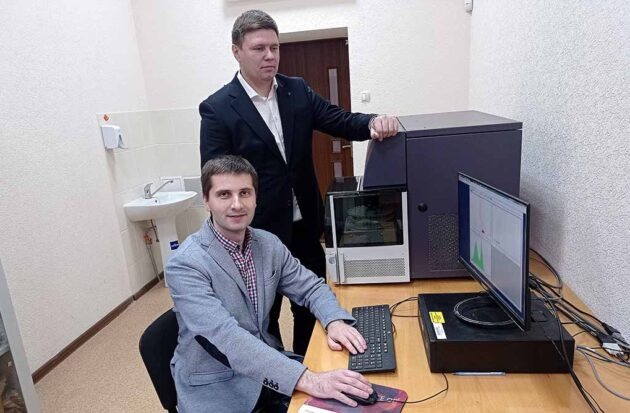Current Research Directions
- Molecular and genetic, as well as cellular basics of disease pathogenesis;
- Development of novel preventive, diagnostic and treatment approaches, technologies;
- Quantitative and functional assessment of cellular populations (immunophenotyping) to characterize immunological aspects of various diseases;
- Elucidation of regulatory mechanisms in the immune system;
- Peculiarities of the redox state of cells under the influence of different factors and in various diseases;
- Signaling pathways in cell death (apoptosis, necrosis, necroptosis, autophagy, pyroptosis, netosis, etc) and features of cell death in infections and non-communicable diseases;
- Assessment of the effectiveness and biosafety of diverse nanoparticles as therapeutic agents;
- Evaluation of the mechanisms for toxic effects of food additives and other xenobiotics on cells.
Major Equipment
- BD FACSCanto ™ II flow cytometer (Becton Dickinson, USA).
- The main task of flow cytometry is to obtain information about cell populations by measuring optical characteristics of cells, using fluorescent dyes. Cytometry allows determining the physical and chemical properties of individual cells. Flow cytometry can be used to:
- Perform immunophenotyping (CD markers);
- Determine the content of surface and intracellular antigens (enzymes, receptors, cytokines, modified proteins, etc.);
- Analyze the redox state of cells;
- To assess the state of cell membranes;
- To evaluate the viability and types of cell death
Major techniques
- To evaluate reactive oxygen species (ROS) generation by cells using H2DCFDA staining;
- To assess the eryptosis rate by Annexin V-FITC staining;
- To detect of viability and types of cell death;
- To analyze cell apoptosis by detecting the content of active caspase-3;
- To detect the content of anti-apoptotic bcl-2 protein in cells;
- To evaluate the mitochondrial transmembrane potential using the JC-1 probe;
- To assess the rate of apoptosis and necrosis (Annexin V and 7AAD) by combined staining with Annexin V-FITC and 7-aminoactinomycin D;
- To assess the intensity of autophagy;
- To investigate the intracellular content of calcium ions using the FLUO4-AM probe.

